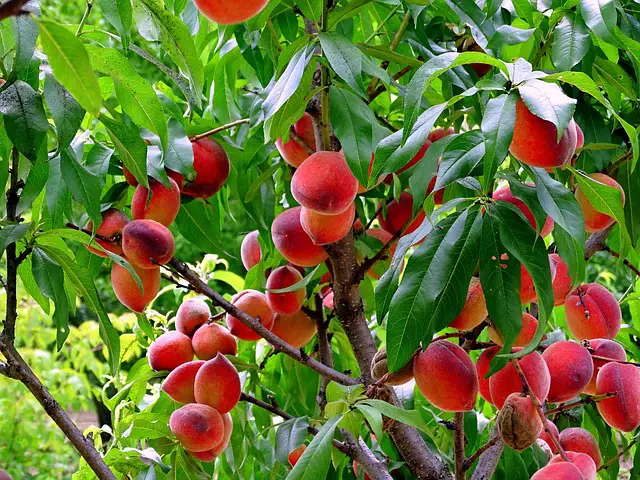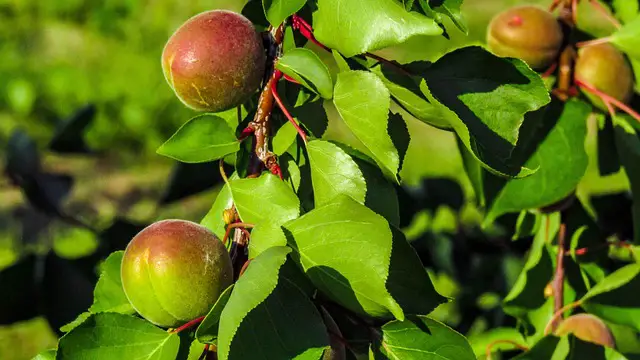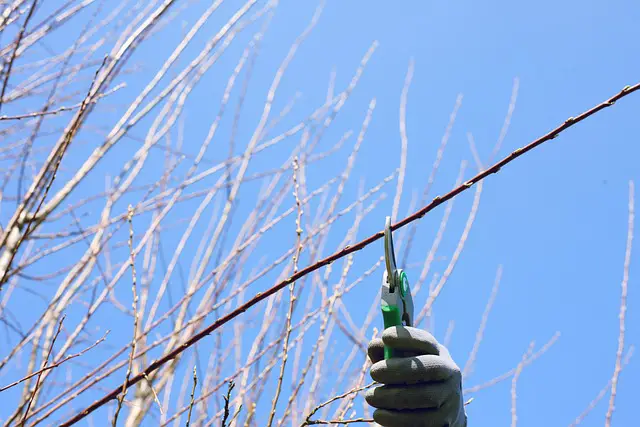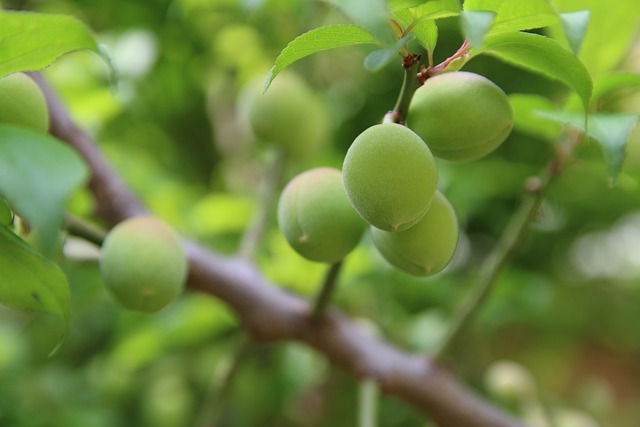
When my peach tree had its first good crop I was over the moon. The tree was absolutely bursting with tiny, fuzzy peaches, and I could practically taste the cobbler and jam. But the next season, there was hardly a peach in sight…what happened?
Well, what happened was, I didn’t yet know about peach thinning. Thinning is removing some of the young fruit to help the remaining peaches grow bigger and better. It also keeps the tree from overproducing one year and underproducing the next. But what happens if I skip this chore? Is peach thinning something I need to do every year?
Peach thinning is necessary for tree health and fruit quality. Thinning peaches improves the size of the fruit, prevents branch breakage, and helps the tree produce a consistent annual crop. Once peaches are the size of a dime, thin so they are spaced 6 to 8 inches apart.
Deliberately removing fruit from a perfectly healthy, laden peach tree may sound like a bad idea, but it’s actually a good and necessary gardening practice. Read on for everything you need to know about why, when, and how to thin peach trees.
Watch the video below to see exactly how I thin my peach trees in the spring:
Why do peach trees need thinning?
The simple answer is: to grow more delicious peaches. Thinning the fruit may seem counterintuitive to a gardener – after all, don’t we want the most fruit possible? The problem is, more peaches on the tree means that each peach will stay smaller.

If there are too many peaches, then less water and nutrients will be allocated to each one. By thinning the fruit, every peach can get the resources it needs to grow bigger, juicier, and sweeter.
Overloaded branches will also weaken the tree, as its resources are being used to support too many peaches. Heavy branches can break, which stresses the already weakened tree, leaving it more susceptible to disease, frost damage, and even a shorter life span.
Thinning the peach crop will also set things up for a good harvest next season too. Removing some of the flower buds or young peaches will increase the tree’s ability to form next year’s flower buds after harvest. If a peach tree isn’t thinned (or if it’s done too late), then the tree may bear too heavy a crop this year, and little to none next year.
When is the best time to thin peaches?
The best time to thin peaches is actually before there are any peaches on the tree – in other words, by pruning while the tree is dormant. (See A Simple Guide to Pruning Peach Trees for Maximum Harvest for more info on how to do this.)
At the end of winter or the beginning of spring (late February to early March in most locations) remove crossing or dead branches, water shoots, suckers near the base of the tree, and excessive branches. A good rule of thumb is to cut back about a third of the overall tree size each year.
In the early summer, you can remove a few more fruiting or non-fruiting branches if the tree is looking a little crowded. Good pruning habits mean that less fruit thinning will be necessary, and more nutrients will be available to the developing peaches.
Learn more about why peach trees should be pruned here: 10 Reasons You Need to Prune Your Peach Tree.

Once the tree is bearing fruit, the best time to thin is about 30 days after flowering. Another guideline is to wait until the peaches are between 1/2 inch and 1 inch in diameter (between the size of a dime and a quarter, or about the size of a thumbprint). This usually happens in June in most areas (or April/May if you live in the south), depending on the peach cultivar.
Nature may help with some of the thinning labor, particularly after a heavy storm or strong winds – this is known as the “June drop”. But, once the peaches are about an inch wide, if there are still too many peaches it’s time for the gardener to intervene.
Some commercial peach growers recommend thinning the buds while the tree is still flowering. You can look for clusters of buds and pinch off any but the largest flowers, usually the one in the center, which will probably grow into the largest fruit. This can be effective, but you may find you still need to remove some peaches once they start to grow.
Be careful not to thin the peaches too early or too aggressively. If you remove young peaches too early, it can cause the pits of the remaining fruit to split. But, thinning too late (when the peaches are larger than an inch) means the tree’s resources are being spread too thin, which could stress the tree and prevent the ripening fruit from getting as large as it should.

How to thin fruit on a peach tree
The best and easiest way to thin peaches is by hand – lightly pull or twist off the small fruit. You can also use a sharp, clean hand pruner to remove peaches. If the tree has been pruned to stay a manageable height (say, under 8 feet), then the only other tool necessary will be a small stepladder (and some gloves, of course).
Prioritize thinning peaches that are damaged, misshapen, or smaller, as they are not likely to develop into the best fruit. Leave one fruit every 6 to 8 inches – about the length of your hand. Remove peaches growing at the tips of branches (so the branch doesn’t break as the peach grows), or too close to the crook (where the branch meets the trunk).
It’s worth taking care to select which fruits to remove and which to keep. Some sources recommend using a stick or even a power washer to more or less randomly knock buds or peaches off the tree, but this could lead to damaging the remaining fruit and branches. You’ll be glad you did the extra work when you taste the “fruit” of your labors.

